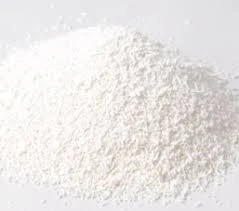
Effectiveness of Foam Stabilizers in Food Products for Improved Texture and Quality
Understanding Foam Stabilizers in Food An Overview
Foam stabilizers play a crucial role in the food industry, especially in the formulation of various products that require a stable structure and texture. These ingredients are often utilized in food items such as whipped cream, meringues, mousses, and even some beverages. Foam stabilizers contribute to both the quality and longevity of these products by enhancing their stability, aeration, and mouthfeel.
Foam formation occurs when gas is dispersed into a liquid, creating bubbles. In the context of food, this process is vital for achieving desired textures and aesthetics. Without stabilizers, the bubbles in a foam can collapse quickly, leading to a loss of volume, texture, and overall quality. Thus, incorporating foam stabilizers becomes essential for maintaining the integrity of foamed products.
Understanding Foam Stabilizers in Food An Overview
Carbohydrates, including various types of gums and starches, also serve as effective foam stabilizers. These substances can thicken the liquid phase and increase the viscosity, which in turn supports the foam structure. For instance, xanthan gum, guar gum, and carrageenan are popular choices in the food industry. They help improve the texture and stability of products like ice cream and salad dressings, where maintaining a specific consistency is paramount.
foam stabilizer food

In addition to natural stabilizers, there are synthetic options like sodium stearoyl lactylate and propylene glycol alginate, which are often used in commercial food production. These additives provide robust stabilization properties and can be tailored to suit various processing conditions and end-product requirements.
The use of foam stabilizers is not without its challenges. Some consumers prefer products made with fewer synthetic ingredients, pushing manufacturers to seek natural alternatives that still provide the desired stabilization. Moreover, the incorporation of stabilizers must be carefully managed to prevent adverse effects on flavor or mouthfeel. The balance between stabilization and taste is critical, particularly in products like desserts where sweetness and texture must harmonize perfectly.
Regulatory agencies such as the FDA monitor the use of foam stabilizers in food, ensuring that they are safe for consumption and accurately labeled. It’s crucial for manufacturers to stay informed about the regulations surrounding these ingredients and to conduct appropriate testing to guarantee their products' safety and efficacy.
In conclusion, foam stabilizers are integral to the production of a wide range of food products, providing essential stability and texture while enhancing the overall consumer experience. The choice of stabilizers, whether natural or synthetic, significantly impacts the quality of foamed products. As consumer preferences evolve towards more natural ingredients, the food industry will continue to innovate, seeking effective yet safe stabilizing solutions that meet the demands of health-conscious consumers. Understanding the role of foam stabilizers is essential for anyone involved in food production, as these ingredients are pivotal in creating products that are not only visually appealing but also enjoyable to eat.
-
Sodium Dichloroisocyanurate Safety Handling ProtocolsNewsJul.29,2025
-
Mining Chemicals for Copper Extraction Processes GuideNewsJul.29,2025
-
Fertilizer for Sale Shipping and Storage TipsNewsJul.29,2025
-
Dimethyl Disulfide as Sulfurizing AgentNewsJul.29,2025
-
Benzotriazole Safety Data Handling and Storage GuidelinesNewsJul.29,2025
-
Ammonium Bicarbonate Safety Handling Storage GuidelinesNewsJul.29,2025
-
The Transformative Role Of Trichloroisocyanuric Acid in Water TreatmentNewsJul.23,2025
Hebei Tenger Chemical Technology Co., Ltd. focuses on the chemical industry and is committed to the export service of chemical raw materials.
-

view more DiethanolisopropanolamineIn the ever-growing field of chemical solutions, diethanolisopropanolamine (DEIPA) stands out as a versatile and important compound. Due to its unique chemical structure and properties, DEIPA is of interest to various industries including construction, personal care, and agriculture. -

view more TriisopropanolamineTriisopropanolamine (TIPA) alkanol amine substance, is a kind of alcohol amine compound with amino and alcohol hydroxyl, and because of its molecules contains both amino and hydroxyl. -

view more Tetramethyl Thiuram DisulfideTetramethyl thiuram disulfide, also known as TMTD, is a white to light-yellow powder with a distinct sulfur-like odor. It is soluble in organic solvents such as benzene, acetone, and ethyl acetate, making it highly versatile for use in different formulations. TMTD is known for its excellent vulcanization acceleration properties, which makes it a key ingredient in the production of rubber products. Additionally, it acts as an effective fungicide and bactericide, making it valuable in agricultural applications. Its high purity and stability ensure consistent performance, making it a preferred choice for manufacturers across various industries.











